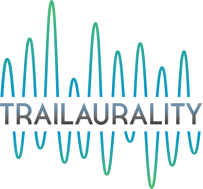Geostorm
/This week, audioviewing the trailer campaign for what is Warner Bros.’ perhaps most risk-laden big-budget cinematic endeavor of the year, Geostorm. Possibly related to its extended and difficult post-production period, the campaign takes almost directly opposite approaches in its first (teaser) and second trailers, and this is reflected by the approach each trailer takes to its music selection.
The teaser trailer for Geostorm, released March 8th this year, aurally places a cover of “What a Wonderful World” (the perennial Louis Armstrong classic), sung and arranged by Sharon Van Etten and Juggernaut Kid. In this cover, the whole tune is slowed down to a creepy crawl, atmospherics taking centre stage. While the vocals are tonally still in a jazz style, the swinging rhythm is replaced by an insistent, straight pulse.
In the first twenty or so seconds of this first trailer, we only hear a few sound effects to convey the action on screen regarding the weather satellites (granted, there wouldn’t be sound in space, but let’s suspend that fact). After the caption card (“controls the world,” at 0:24), we expect to hear a sound to match the tornadoes forming on the ground, but our expectations are subverted as we are greeted with silence. This is a key moment in the trailer: this is when the audioviewer understands that something not only wrong, but catastrophic is about to happen.
Further, the lyrics of ‘What a Wonderful World” are synchronized with the on-screen action to further emphasize the counterpoint between the audio and visual narratives: Van Etten’s serene crooning of “clouds of white” is heard in stark contrast to the white mists of a tumultuously rising tide on a beach, sweeping away hundreds of people.
Cards are judiciously placed between the lyrical phrases, touting first-time director Dean Devlin’s work on Independence Day. A rise in sound takes us from about the thirty second mark onwards, culminating in the explosion of a satellite at 0:58, synching up the word “world” with a shot of the world in question. In the last twenty seconds, the song gives way to alarming tones and the sound of an ever-quickening heartbeat, showing off ever-escalating scenes of destruction, culminating in a frozen plane falling out of the sky. The trailer cuts to black and silence, finishing with the main title card and a vocal reprise of that signature line, “what a wonderful world.”
The ironic, slow-tempo cover song has become, at this point, a somewhat old trick in trailer music production – just look at trailers for The Social Network or the Avengers for a couple of well-known examples. However, it would be remiss to say it doesn’t work for Geostorm in arresting our attention.
Geostorm’s second trailer, dropped roughly a month ago, gives off a very different tone, as we might expect from a second trailer, here walking a fine line between action and comedy. A few bars from the 1967 hit “Time Has Come Today” by The Chambers Brothers kicks off a spate of narrative at 0:22, explaining that the US government has taken to geoengineering through the use of sophisticated weather satellites. However, this quickly turns to SFX as the audioviewer is made to understand that the satellites have begun to malfunction – unintentionally or not. A subtle, ongoing ticking sound—think of the final trailer to Dunkirk—continues in the background, suggesting grave danger if action isn’t taken swiftly to mitigate the threat.
Around 0:45 we hear orchestral swells as the main character, a father, must go to space to investigate the weather satellite issue, assuring his daughter that he will be fine. The established dramatic tone, however, oddly turns on a dime at 0:44 as “Time Has Come Today” comes roaring back -- for a moment.
The audio editing gets more creative at this point, as I am fairly sure the just the word “time” from the Chambers Brothers song is interjected amidst an original ticking clock sound against the on-screen audio from various action scenes. At 1:33 the release date card arrives at roughly mid-trailer, and “Time Has Come Again” comes (again), this time with bass and percussion featuring much higher in the mix. It seems that some instruments have been overlaid or re-recorded, as the guitar seems to be much heavier and more distorted than in the original, at least.
By the two minute mark, it becomes clear that the vocals are just shouting “time” over and over -- perhaps a sample from, or a recreation of, the original song’s vocals. Some one-liners occasionally interrupt the tune, but it comes back to finish off the rise before the turn line.
Coincidentally, this second trailer seems to reflect the fact that Geostorm has seen three years of filming and another director brought in entirely (Danny Cannon, Judge Dredd) for upwards of $15 million worth of re-shoots. The trailer turns on a dime between trailer editing tropes associated with action, comedy, and drama, in roughly that order. A real storm, indeed.
- Curtis Perry








